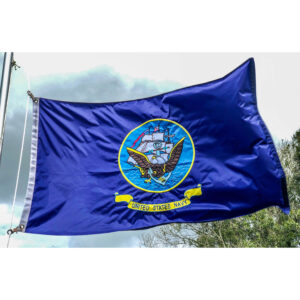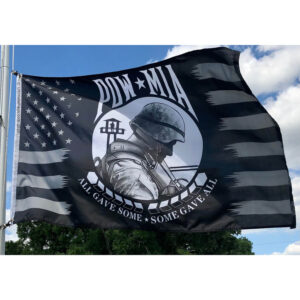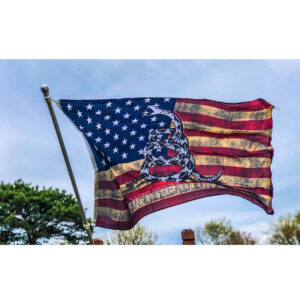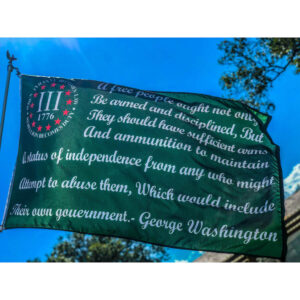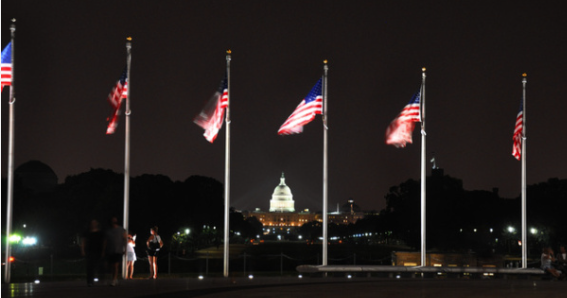
American Flag Display and Respect: Proper Guidelines and Etiquette
Respect towards the American flag is shown through following specific rules and guidelines. Under U.S. Flag Code, there are clear laws that decide how the flag should be handled and displayed. For example, choosing the right size flag for your pole is important; if you use a 20 ft. to 25 ft. pole, a 3 ft. x 5 ft. flag is generally used. Also, the flag should only be flown from sunrise to sunset unless it’s lit up during dark hours. To truly honor our nation’s symbol, we must ensure these rules are followed.
Properly displaying and respecting the American flag involves ensuring it is flown in good weather, not used for advertising purposes, kept clean and undamaged, and never displayed upside down except as a sign of distress. Additionally, when displayed with other flags, the U.S. flag should be first and centered.
Undeviating Guidelines for American Flag
The U.S. Flag Code is a comprehensive set of rules that outlines the correct display, handling, and respectful treatment of the American flag. This code serves as a foundational guidepost for ensuring that the flag is revered with the respect and honor it deserves.
One particularly noteworthy guideline is the mandate that the flag should never be displayed upside down except as a sign of distress. This symbolizes the significance of distress and dire need, as well as underscores the gravity of this action. For instance, if an individual or group was in peril and in desperate need of assistance, displaying the flag upside down can serve as a visual indication of their urgent circumstances.
Moreover, when presented against a wall, the union (the blue field) should always be uppermost and to the flag’s own right. Similarly, when showcased in a window, the union should be positioned to the left of the observer outside. These precise specifications highlight the meticulous attention given to flag display under varying circumstances. Consider a public building proudly exhibiting the American flag. According to this protocol, its positioning against a wall would adhere to these regulations, indicating respect and attention to detail.
Additionally, though using the flag for advertising or profaning purposes is strictly prohibited by the Flag Code, utilizing buntings made in national colors can serve as a respectful alternative for decorative purposes without denigrating the sanctity of the flag.
Following these guidelines becomes imperative in order to honor and maintain the dignity of the American flag. The precision and earnestness with which we adhere to these directives embody our commitment to upholding a symbol that embodies our nation’s values and history.
With a better understanding of how to honor and respect the American flag, let’s now move on to exploring how its size and presentation on a flagpole contribute to its overall representation and significance.
Flagpole and Size Specifications
When displaying the American flag on a flagpole, it’s important to consider proportionality: matching the size of the flag to that of the pole. This means selecting a flag size that harmonizes with the height of your flagpole. For instance, a common combination is using a 3 ft. x 5 ft. flag with a 20 ft. to 25 ft. pole while opting for a 4 ft. x 6 ft. flag for a 25 ft. to 30 ft. pole. This way, your flag flies gracefully in proportion to its support.
The reason behind this suggested match in size is mainly one of aesthetics and functionality. A very small flag on a towering pole might look disproportionate and diminish its visual impact, while an excessively large flag might not soar majestically with even the slightest breeze and can become cumbersome to handle during hoisting and lowering ceremonies.
It’s essential to keep in mind that these are general recommendations, as individual situations may vary depending on specific circumstances and preferences. Ultimately, it’s about ensuring a respectful and dignified display.
Think of it like putting up artwork in your home; you wouldn’t hang a tiny picture on a giant wall, nor would you display an enormous painting in a cramped space. The aim is to achieve balance and harmony.
Sunrise to Sunset Display
In addition to this proportionality consideration, it’s important to remember that the American flag should ideally be flown from sunrise to sunset unless it is properly illuminated during the dark hours. Proper illumination ensures that the flag remains visible and true to its colors throughout nighttime.
Failure to adhere to this guideline doesn’t just indicate disrespect but can also make the flag appear dull and unkempt in low light conditions, detracting from its inherent splendor.
Understanding these specifications for flag size and proper display times is crucial to honoring our nation’s emblem with grace and dignity every day.
Mastering the fine art of paying homage to the American flag sets the stage for how public and business establishments uphold our national standard. Understanding the guidelines governing these settings is paramount—let’s embark on this enlightening journey next.
Public and Business Building Display Rules
Public and business buildings are crucial parts of our communities, so it’s important to display the American flag with honor and respect. When hanging the flag alongside others, such as state flags or organizational flags, specific guidelines should be followed to ensure proper placement and precedence.
In a row of multiple flags outside a public building, observing a respectful order of display is crucial. The American flag should be placed to the observer’s left. This not only signifies the honor given to the U.S. flag but also ensures that it holds the position of highest prominence.
Similarly, businesses should also abide by these guidelines when flying the U.S. flag outside their premises. By doing so, they demonstrate allegiance and respect for the nation’s flag while adhering to established protocol.
It’s vital to note that displaying other flags alongside the U.S. flag requires careful attention as well. If other flags are flown next to the American flag, they should be of equal height, while the U.S. flag holds centricity. This practice underscores the significance of the U.S. flag without eclipsing the flags of other nations or organizations being displayed.
Furthermore, during days of national observance or mourning, businesses and public buildings may need to take particular care in displaying the American flag at half-staff. This solemn tradition commemorating significant events serves as a powerful symbol of national solidarity and homage.
By following these display rules, public and business buildings play an active role in promoting patriotism and respect for national symbols, contributing to a shared sense of unity within communities while honoring national traditions.
Understanding these display rules illuminates how individuals can participate in honoring the flag’s significance by facilitating proper display practices in public and business settings.
Raising and Folding Etiquette
Raising the flag is a solemn and dignified act, signifying the start of a new day and the proud display of national identity. When raising the flag on a flagpole or mast, ensure it’s briskly hoisted to the top. This swift and smooth motion reflects the vitality and spirit of the nation it represents, affirming respect for the flag and all it stands for.
Precision in Folding
The process of folding the American flag is not just about neatness but also about paying homage to its symbolism. Each fold carries significant meaning – 13 folds in total, symbolizing the original 13 colonies. When meticulously carried out, this careful folding ensures that the blue field with the stars always remains outward, signifying honor to the nation and its veterans.
Imagine folding a letter you’re sending to someone you deeply respect—each crease is made with care and reverence for what it represents. The same level of care should be applied to folding the American flag. It’s about showing deep respect for our country, its history, and the sacrifices made by so many individuals.
The precision in folding underscores the importance of respect for the flag, honoring its significance as an emblem representing unity and freedom.
Ceremonious Lowering
Just as raising requires swiftness, lowering the flag should be done ceremoniously at sunset or at the appropriate time given its civilian or military context. It signifies gratitude for another day lived under the protection and ideals represented by our national banner.
Think of this act as saying “thank you” to the flag before it rests for the night. Just like we express gratitude to family members or friends before we part ways.
The proper handling of these procedures reflects our responsibility to honor and uphold not just a piece of fabric, but everything it symbolizes: freedom, democracy, and shared national values.
With these guidelines in mind, we embrace traditions that honor our nation’s legacy and demonstrate respect for our united community.
Now, let’s move on to understanding how to display the American flag at half-staff with reverence and solemnity.
Half-Staff Flag Display Guidelines
 Flying the American flag at half-staff is a powerful symbol—it is lowered as an act of mourning or respect. The process begins by raising the flag to the peak for an instant before gradually lowering it to half-staff. Before sunset or closing time, the flag should be hoisted to the peak once more and then ceremoniously lowered.
Flying the American flag at half-staff is a powerful symbol—it is lowered as an act of mourning or respect. The process begins by raising the flag to the peak for an instant before gradually lowering it to half-staff. Before sunset or closing time, the flag should be hoisted to the peak once more and then ceremoniously lowered.
This tradition is not arbitrary but deeply meaningful, conveying reverence for specific instances or individuals where collective acknowledgment of loss or remembrance is necessary. The observance of this practice extends a public visual tribute that’s universally understood—it’s a somber, silent language that requires no words and yet speaks volumes. Each time you witness the flag flying at half-staff, it carries significance—whether you’re on your way to work, taking a walk in the city, or visiting a public space.
It’s crucial to understand that hoisting the flag halfway carries profound national and emotional significance. The position demands our attention, sympathy, and reflection. It’s a traditional sign of collective mourning, often signaling the passing of esteemed officials, national tragedies, or significant events that have impacted our country’s fabric.
According to the U.S. Flag Code, there are specific days marked for flying the flag at half-staff, such as Memorial Day until noon, Peace Officers Memorial Day, and Patriot Day.
For instance, after national tragedies or in remembrance of significant individuals such as military heroes or public figures who have passed away, it’s customary for presidential proclamations to direct federal agencies and state governors to fly flags at half-staff. This ordered observance ensures widespread reverential unity across cities and states.
Some may argue that it’s an obsolete gesture given modern communication advancements, but despite various perspectives on its relevance today, this tradition serves as a uniting symbol regardless of differing opinions. Its impact is profound in providing a tangible representation of collective acknowledgment and tribute.
In times of national bereavement or tragedy, when flags across the nation uniformly bow halfway in somber unison—an evocative sight underscoring our shared history—this traditional display speaks to our kinship and empathy amidst adversity.
In observing proper guidelines for displaying the American flag with respect and dignity, we uphold its revered symbolism. Now let’s turn our attention to exploring respectful decorative practices that elevate our surroundings.
Respectful Decorative Practices
The American flag holds a special and revered place in the hearts of many, with its colors holding deep meaning and symbolism for those who respect and love their country. When it comes to using the flag for decorative purposes, it’s crucial to approach such uses with care and understanding. The U.S. National Flag Code has laid out clear guidelines that should be honored to maintain the dignity of the flag.
It is crucial to remember that the flag should never be used as clothing, drapery, or bedding. This means that it should not be fashioned into attire, used as curtains or any form of fabric covering, or employed as a blanket or throw. The rationale behind this guideline is simple: the flag represents not just a piece of cloth, but the ideals and values of a nation. Using it for such purposes may diminish its sacred symbol.
Moreover, employing the American flag for advertising purposes or as a printed decoration on disposable items goes against its code of etiquette. The purpose of the flag is to honor America and serve as a unifying emblem for its citizens.
The U.S. National Flag Code was created in 1923 and became Public Law in 1942, laying out guidelines for displaying and respecting the American flag.
Consider the yearly commemoration of Independence Day. While it’s entirely appropriate to decorate in celebration, using disposable plates, cups, or napkins adorned with the American flag could be seen as disrespectful according to flag guidelines.
Respecting these guidelines ensures that the flag remains a respected symbol of unity and pride for all who behold it. It’s important to find alternative ways to display national colors without discrediting the U.S. flag. Understanding these guidelines will aid in utilizing this cherished emblem with dignity and reverence.
As we journey through the intricacies of displaying and honoring our nation’s beloved emblem, now let’s shift our focus to delve into the solemn details of “Ceremonial Flag Unveiling.
Ceremonial Flag Unveiling Details
When it comes to unveiling the American flag in a formal ceremony, every step has to be just right. From the attire of participants and the time of day to the music played, every detail has its significance.
Time and Attire
The ceremony is usually held at sunrise, which is symbolic of new beginnings and hope. Participants involved in the ceremony are recommended to wear business casual or formal attire, reflecting the solemn nature of the event.
Distance and Duration
| Detail | Recommendation |
|---|---|
| Ideal Distance | Around 25 feet for audience visibility |
| Duration | Ranges from 15 to 30 minutes |
These specifications ensure that there is ample space for everyone to experience the unfolding of the flag, and also enough time for reflection on the significance of the occasion.
Music Selection
Music plays a pivotal role in setting the tone for these ceremonies. The National Anthem or other patriotic songs are traditionally chosen to accompany the unfolding of the American flag and add emotional depth to the entire experience.
It is important to note that each detail mentioned above contributes to creating an atmosphere of respect and reverence during a ceremonial flag unveiling. These ceremonies not only highlight the importance of the flag but also serve as a reminder of the values it represents.
The careful orchestration of these details demonstrates how much each element contributes to honoring the flag and its symbolism. They all work together to create a truly solemn and meaningful experience.
You may also enjoy reading: The Evolution of the American Flag


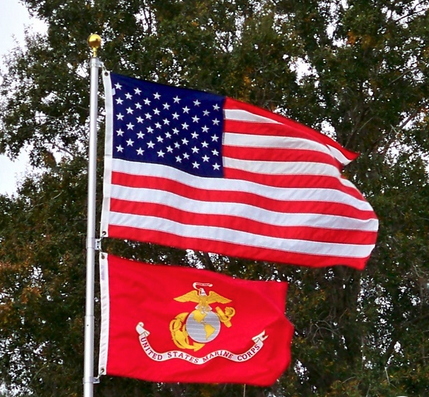




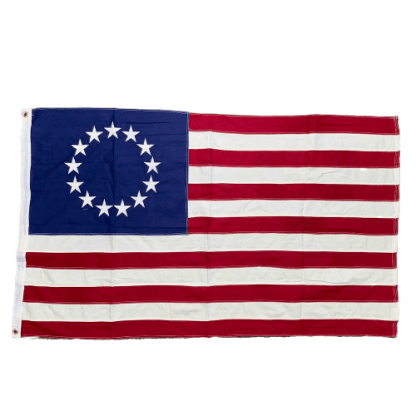


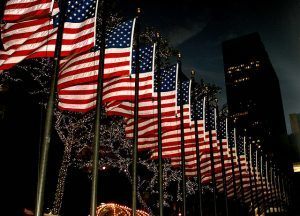
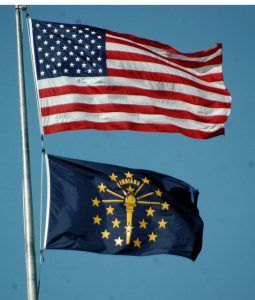 I want to fly my USA flag with my other flags.
I want to fly my USA flag with my other flags. m using a flag at an event.
m using a flag at an event.